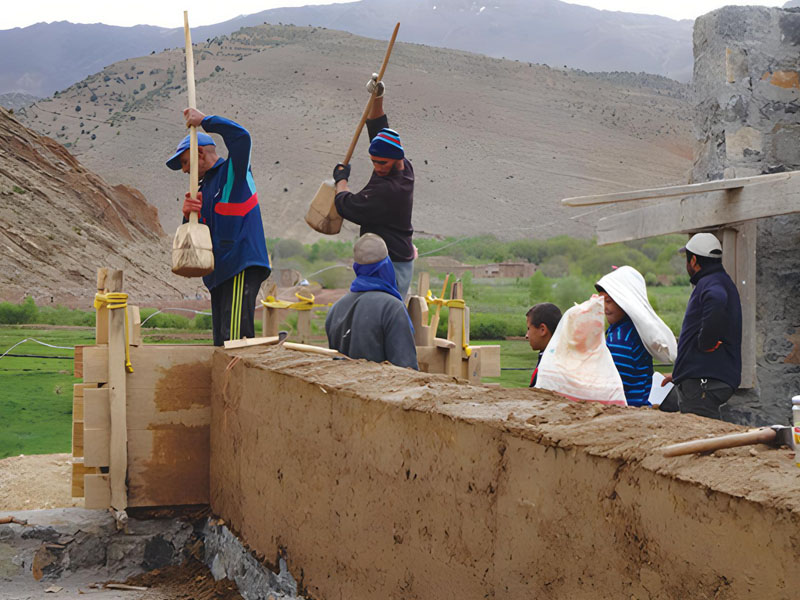Traditional Clay Construction Materials and Methods
Issue 52

By Zubair Mihdad, Morocco
Due to their geographic location, the Islamic countries of northwest Africa (Egypt and the countries of Maghreb and Mali) have cliffs overlooking the Mediterranean Sea and the Atlantic Ocean, and majestic mountain ranges. The southern part of these countries includes beautiful, charming oases. All this has been reflected in the countries’ culture, heritage and history, and in their residents’ lifestyles.
The heritage of these countries reflects diversity, richness and sophistication. There are civilised urban buildings, the architecture of the mountains, coastal architecture, and desert and semi-desert architecture, and there are mosques, schools, gates, kasbahs (the central part of a town or citadel), palaces and more. Researchers’ efforts are still needed to uncover secrets, systems and cultural patterns.
In the desert region of these countries, a type of housing predominates with heritage technology and ancient traditions. In these mud buildings, clay is the principle material. The foundations are made of stone, then walls are raised and towers are built, and the whole city has a distinctive design.
Building with mud is not limited to this region; the inhabitants of large areas of the Arab countries, Asia Minor and Africa built their homes and forts with mud. Huge old buildings still exist today in Hadhramaut in Yemen, Aleppo in Syria, Hail in Saudi Arabia, and many other countries and cities.
In all these countries, people inherited and exchanged the techniques, skills and culture related to building with clay, contributing to the development and sharing of experiences. However, the clay architecture in Northwest Africa is remarkable for its strength and resilience in light of the climatic conditions and erosion. These buildings also feature very attractive designs and smart engineering, and their construction reflects strong social organisation.
The inhabitants used their ancient knowledge for economic advancement, military fortification, social stability and cohesion, and spiritual purposes.
This architecture has become a manuscript that describes the population’s culture, customs and origins, presenting a clear picture of how they lived and dealt with their physical and political environments, their economic aspirations, their beliefs, and their interactions with each other across different eras.
Despite its economic, social and environmental importance and its value in terms of sustainable development and preserving natural resources, this important heritage is now endangered. Modern concrete construction has spread to these areas, endangering the natural environment.
The study of traditional clay building methods is necessary to preserve this important heritage, the collective memory and the environment. It promotes self-sufficiency and discourages poverty and social disparity.
This study aims to introduce the materials used in mud construction and the methods and traditions associated with building with mud. In order to accomplish this, I used a descriptive approach, collecting information on field visits to palaces and kasbahs in southeast Morocco. Information was also collected during talks and interviews with residents and master builders in these areas. I also studied and extrapolated from a number of photographic documents. This enabled me to form a comprehensive and accurate idea of the research topic.


































































